
Dispelling the Hungry Ghosts: Treatment of Trauma & Obsessive Compulsive Disorders with Acupuncture & Herbs
Chinese medicine has two major approaches: acupuncture, which is a form of direct bodywork and herbal medicine where external plant medicine is consumed, usually in the form of a tea or as pills. Both approaches have their own healing strategies and ways of viewing the body. Both are able to influence and affect body physiology and psychology. During the early classical era of Chinese medicine, acupuncture was seen as the chief medicine of the north, while herbs were the medicine of the south.
During the Tang Dynasty (618-907 AD), the north and south of China were joined. The two medical approaches began to exchange ideas and influence upon on another. Today, the dominant form of acupuncture practiced worldwide, called Traditional Chinese Medicine (TCM) is arguably a form of “herbalized acupuncture.” However many contemporary teachers are working to bring back the practice of acupuncture as practiced in its original classical form, even creating herbal medical practice that is influenced by acupuncture strategies, bringing the exchange of ideas full circle.
Herbal medicine focuses on the functions of the internal organs. Each herb is classified as influencing one or more of these organic functions. The herbs are said to “enter” into an organ to influence its function.
Classical acupuncture views the body in a broader way: as a series of energetic channels, some of which contact the internal organs, others that don’t. Each acupuncture channel exerts a wide influence on the totality of the body, beyond just organ energetics.
Both herbal and acupuncture medical approaches can yield strong results. Arguably the medicine of each approach is strongest when practiced according to its original model. However, honoring and understanding the opposing view and using each medical approach through the lens (and strategies) of the other can offer insight and deeper understanding.
As part of my series of articles about the Luo “Connecting” Vessels, which I consider vital tools for treating trauma, I want to discuss a classical herbal formula for treating blood stasis, which I’ve found highly effective in treating trauma, obsessive disorders and PTSD.
Blood stasis is the pathology most associated with trauma, and the Luo Vessels are channels that best address the blood in its static state. Seeing the treatment of blood stasis and trauma through the lens of herbal medicine is helpful to clarify and expand acupuncture treatment strategies.
The Dan Shen Yin, translated as the “Salvia Decoction” can be seen as an herbal formula that resonates with the “Luo Vessels”. It treats blood stasis coming from an etiology of Qi Stagnation.
Qi stagnation means the smooth energetic flow that controls function of the physical and mental bodies has becomes constrained. This results from emotional stagnation: stagnation of Liver Qi, which is responsible for overall body smooth flow of Qi and most closely related to the emotions. When a person cannot effectively process and harmonize their emotions, the Qi of the Liver will become constrained.
Constraint of Qi leads to heat. Any stagnation in the body creates heat and inflammation. The heat affects the blood to result in abdominal pain and various abdominal symptoms: pain in the flanks, epigastrium, hyprochondrium, as well as eating disorders and obsessions.
Qi stagnation usually gives rise to pain and discomfort that is relatively mild, whereas blood stasis is more severe.
Emotional stagnation causes constraint in the smooth flow of Qi energy in the body, originating in the chest, which generates heat and blood stasis that begins to affect the abdomen as well as the chest.
The chest is seen as the origination of qi and blood stasis due to the residence of the Lungs and Heart: the two organs most involved in circulation.
This formula also shows how an emotional disturbance that stagnates the blood, affecting the chest can progress to impact the abdomen and create mental-emotional disorders such as obsession.
Chapter 10 of the Ling Shu (acupuncture medical textbook), blood stasis afflicting the Luo Vessels of the chest (Heart, Lungs and Pericardium) give rise to chest pain, discomfort, neck stiffness, loss of voice, frequent urination, sighing and heat in the palms. It also can cause heartbreak, difficulty controlling one’s emotions, withdrawal and hyperactivity.
When blood stasis progresses to affect the abdomen, obsessive symptoms will begin to develop.
According to 19th Century Doctor Wang Qing Ren, blood stasis follows a progression in the body, beginning in the region of the chest before traveling to impact the abdomen and lumbar spine. The Salvia Decoction treats traumatic progression from the chest into the abdomen.
The formula contains three core ingredients. It is often modified to direct its therapeutic effects into the Luo Vessels or channels that are most affected by blood stasis trauma. The core ingredients are: Dan Shen (Salvia); Tan Xiang (Sandalwood); and Sha Ren (Amomi Villosum).
Salvia, the principle herb in the formula, is classified as an herb that moves the blood. It “enters” the organs and channels of the Heart, Pericardium and Liver: all organs involved in blood physiology. The chief functions of Salvia are to eliminate blood stasis through moving the blood and clearing heat from the blood agitating the spirit, mind and causing reckless blood. It eases discomfort in the chest while also calming the mind and spirit.
Sandalwood is an associate herb to Salvia. It Regulates the Qi: the energy force that moves the blood. Sandalwood “enters” the Lung, Spleen and Stomach. Sandalwood has a “harmonizing” effect on the digestive organs of the Stomach and Spleen. Due to its effect on the Lungs, Stomach and Spleen, Sandalwood regulates energy in both the chest and abdomen, addressing the movement of stasis from one to the other.
Both Salvia and Sandalwood are highly analgesic with a strong effect in easing pain in the chest and abdomen.
Amomi Villosum is another associate herb to Salvia. Like Sandalwood, Amomi Villosum has an effect on digestion, especially boosting the appetite to treat various eating disorders. It is classified as an herb that is “dampness resolving” due to its aromatic nature. It “enters” the Spleen and Stomach to “transform dampness” and “warm” the Stomach and Spleen to improve digestion as well as mental function. It improves digestion and appetite through eliminating internal cold, which strengthens digestive function and helps in the metabolism of food and drink, as well as in the elimination of waste. The elimination of dampness also helps stops obsession and addiction.
The three herbs contained within the core Salvia formula represent the origination of trauma due to an emotional cause, which first afflicts the chest. Salvia is the herb that represents this stage. The blood stasis can result from Qi stagnation.
The regulation of Qi is seen in two important ways in Chinese medicine. There are two major axis of Qi in the body: the chest and the abdomen (including the diaphragm).
The Heart is the organ that circulates the blood through the assistance of the Lungs which provide the Qi regulation to help move the blood. This makes the chest one of the major “axis of Qi.”
The Stomach and Spleen have a important directional function in the body. The Qi of the Stomach descends all energy in the body, while the Spleen is responsible for the ascent of energy. The Stomach and Spleen together harmonize and control all upward and downward directional energy flow in the body, making them the second “axis of Qi” in the body.
The Liver and its effect on the diaphragm contributes to the dynamics of the Stomach-Spleen. While the Stomach and Spleen control upward and downward energy movement, the Liver is said to control the smooth flow of Qi in the body overall. The Liver often reacts to disharmony within the Stomach-Spleen, trying to restore order.
The etiology for blood stasis trauma, as suggested by the Salvia Decoction is rooted in Qi stagnation caused by a disruption to one or more of the “Axis of Qi” in the body.
The problem begins in the chest to disrupt the Heart and Lungs and moves into the abdomen to also affect the Stomach-Spleen-Liver. The Qi becomes stagnant and it fails to help circulate the blood.
From an emotional point of view, an experience that is too overwhelming or complex for a person to process, or that involves shock will affect the Liver, Stomach and Spleen (the central axis that regulates the mind and emotions as they direct the energy flow of the body, especially in relationship to digestion) to harmonize the mind and emotions. The Heart and Lungs bear the brunt of the shock and disappointment, or feeling of betrayal, while the Stomach-Spleen and Liver get jammed up in their inability to make sense of the situation and allow it to be digested and moved. This is what gives rise to obsession and confusion disorders.
Sandalwood is an herb to regulate the Qi of the Lungs and harmonize the Stomach and Spleen. Amomi Villosum treats the progression of the blood stasis trauma from the chest into the abdomen, which can create obsession states. Salvia treats the Heart, Pericardium and Liver and their ability to circulate blood. Together, these two herbs affect the regulatory capacity of the chest (Heart, Pericardium and Lungs) and the abdomen (Stomach-Spleen) in its ability to harmonize ascent and descent of energy and the smooth flow of Qi.
Obsession is a disorder associated with dampness in Chinese medicine, highly involved in the dynamics of the Stomach and Spleen: the central digestive axis. It is seen as a failure of the body to “transform and transport,” allowing mental-emotional material to linger and ferment. The chief strategy for resolving obsession and for treating disorders involving dampness afflicting the Spleen is to “open the portals,” which in herbal medicine is achieved through aromatic herbs such as Amomi Villosum.
I recently used the Salvia herbal formula to support a patient with obsessive compulsive disorder involving fantasy and sexual hyperactivity. The root of the compulsion was due to blood stasis trauma that had created severe obsession and “acting out” behavior of a sexual nature.
The patient’s blood stasis trauma was affecting the Luo Vessel of the Liver, manifesting in sexual symptoms, including hyper sexuality and frequent fantasy, that even involved the development and playing out of alternate personalities. According to Chapter 10 of the Ling Shu (the chief medical text for acupuncture), when the Liver’s Luo Vessel becomes afflicted it will generate obsession relating to hyper-sexuality and fantasy, as well as the tendency to create alternate personalities or personas.
According to the theories of Wang Qing Ren, this patient’s symptoms indicated that blood stasis trauma had progressed from the chest into the abdomen and was beginning to affect the lower region, especially the genitals. The obsession had progressed into obsessive compulsive behavior and tendency to create alternative personalities that were played out through fantasy. Therefore the core Saliva formula needed to be modified to direct the herbal effect into the lower region of the body.
The modification for this patient included the addition of three additional herbs, to focus its effect on the Luo Vessel of the Liver and the lower region: Chuan Lian Zi (Melia); Du Zhong (Euccomia); and Ji Xue Teng (Milletia).
Chuan Lian Zi (Melia) is an herb classified as “Qi Regulating.” It “enters” the channels of the Liver, Bladder, Stomach and Small Intestine. It chiefly moves the Qi of the Liver allowing it to stop pain, especially in the genital region. It also clears heat from the Liver and Stomach, usually caused by stagnation. Melia also “kills parasites” and benefits the skin.
Du Zhong (Eucommia) is a “Yang Nourishing” herb that enters the Liver and Kidneys. Yang is a term used to indicate a deeper level of energetics than the Qi. Qi is seen as the daily functional activity and capacity of the body. Yang is the root source energy that finances and supports the Qi, suggesting a much deeper level of functional body dynamics. An herb that works on the Yang is designated as being far stronger than one that works on the Qi, suggesting the blood stasis being treated has become severe afflicting the lower abdomen, requiring stronger blood moving herbs to break through the stagnation.
Eucommia has a strong effect in strengthening the muscles and bones, which is what it’s most popularly used for. However, here it is used to support breaking through the blood stasis rooted in the lower region of the body. The genitals are also viewed in Chinese medicine as a sinew, called the “ancestral sinew,” therefore allowing Euccomia to have an effect on this region.
Ji Xue Teng (Milletia) is a Blood Moving herb like Salvia. It “enters” the Heart, Liver and Spleen: the organs most involved in the body’s blood dynamics. It is used to support the function of Salvia in moving the blood, yet also tonifies the blood which satisfies a popular strategy in herbal medicine called Sheng Hua, which says that in order to move blood one must also tonify the blood and vice versa. Like Euccomia, Milletia works on the physical body, having a relaxing effect on the tendons: in this case on the genitals: the “ancestral sinews.”
To work with the particular PTSD blood stasis manifesting in the Luo Vessel of this patient’s Liver Luo Vessel, the herbs added needed to “enter” the Liver channel and also to work on the region of the lower abdomen. According to Wang Qing Ren’s research on blood stasis, its progression and treatment, blood stasis begins in the chest, moves into the abdomen and finally settles into the lower abdomen where it begins to go beyond the regular internal organs to affect the “Curious Organs”: the brain, bones, blood vessels, uterus, prostate and genitals. When blood stasis has reached the level of the lower abdomen and the “Curious Organs” the effect of the herbs moving the blood must be stronger. To move the Qi isn’t powerful enough to treat blood stasis located this deeply in the body. The Yang must be activated, which is the source of Qi in the body: a very deep reservoir of “warm,” dynamic, moving energy.
One could say, to work with the Yang is also to work with the Willpower. In terms of the Liver’s Luo Vessel, we could say the patient has a “shadow” relationship with himself and his trauma that causes him to create alternate personalities or double lives so he can play out that which is haunting him from the past. The Willpower has been redirected from his primary personality and “path” in life into subpaths and even “fetish” selves. There has developed a division between the outward social self and the hidden, secret self. In the case of this patient, he began for several years to play out his fantasies through pornography, later finding a partner he could explore with. The intricacies of his “double life” and dual personality involved being the “good boy” socially and the debauched “bad boy” in secret. He felt these two parts of his personality couldn’t harmonize and subsequently he created two separate selves, even giving himself alternate versions of the same name to match the personality he was expressing.
In terms of the Liver, the Yang is a force that needs to be reckoned with. The Liver has a tendency to become exuberant in terms of its Yang expression. This is due to the close relationship the Liver shares with the Kidneys (both of which control lower abdomen Qi dynamics) who are said to contain the Jing-Essence (the original Yin and Yang of the body). The Liver’s capacity to control the smooth flow of all Qi in the body (a strong wide-ranging function) stems from its close relationship with the Yang through the Kidneys.
When the Liver is afflicted, the Yang often needs to be subdued and descended from rising into the head. Rising exuberant Liver Yang can cause headaches, high blood pressure, aggression, violence and even stroke, as well as various neurological and behavioral symptoms. It can even create self-destructive tendencies, insanity or “death wind” (suicidal tendencies).
The relationship between the Yang and the Willpower is expressed through the Liver, especially in its relationship with the Kidneys. The Liver belongs to the Element of “Wood” (the 5 Elements are a system of classification and correspondence within classical Chinese medicine) which is responsible for growth, direction and forward movement. The Liver is responsible for the smooth flow of Qi in the body. It is the organ that keeps everything moving, ideally in a smooth way. However, when the Liver becomes agitated, often due to dysfunction in the Stomach-Spleen, it can become too exuberant and aggressive in its movement of energy.
Liver Qi exuberance often occurs when it is harassed by stagnation within other organs, especially that of the organs it “controls”: the Spleen-Stomach. Stagnation causes the Liver to generate heat, which will exacerbate its own Yang. The heat rises into the head, which can cause explosive events to occur, physiologically or behaviorally.
The Liver’s Luo Vessel travels from an acupuncture point on the lower leg, located on the tibia bone. The point is called “Insect Ditch” (LR-5), suggesting it treats parasitic situations. It is the Luo point of the Liver channel.
The Liver’s Luo Vessel travels from LR-5 up the inner leg into the genital region, gathering around the acupuncture point “Pubic Bone” (CV-2) at the pubic bone. The classical symptoms of the Liver’s Luo Vessel, as detailed in Chapter 10 of the Ling Shu are: priapism (constant erection or “abnormally” frequent horniness and sexual arousal), testicular and/or genital swelling, genital itch described as “cruel,” which can imply STDs or sexual compulsivity. Stroke is said to be an extreme symptom.
The psychological profile of the Liver’s Luo Vessel includes frequent engagement in fantasy: wanting to be someone else and creating multiple personalities. This can become as severe as a break from reality or Schizophrenia. The multiple personalities can take on a destructive nature (toxic blood) which in its extreme can cause self destructive behavior or suicide. There can be an intolerance for oneself that develops within the Liver’s Luo Vessel, causing such symptoms.
The patient was exhibiting several of the classic symptoms of the Liver’s Luo Vessel. What began as frequent masturbation to pornography morphed into playing out fantasies in risky and reckless ways. His “acting out” was fueled by constant sexual arousal and a desire to take on alternate personalities. He became more and more drawn to risky scenes, scenarios and people, which caused him to contract several STDs which caused him shame and feelings of hopelessness, which further fueled his self-loathing and wish to create alternate personalities. He experienced euphoria while engaging in his “acting out” behavior, a type of “high” he’d say lasted about “an hour after.” His mood would crash afterwards and he’d be left feeling depressed and despairing for days after. He began to dislike himself more and more, which caused him to start having subtle suicidal ideation.
In the classical era of Chinese medicine, which was highly influenced by Shamanism, this patient would potentially be considered “possessed” by a ghost or entity. He’d be seen as having a parasitic infestation by a “sexual ghost.” Modernly we see this situation as an addictive, compulsive disorder. Yet, the name of the point LR-5 refers to the idea of the “sexual ghost” and its infestation causing compulsive behavior. In our modern way of thinking, the “ghost” is the trauma, whatever it may have been that has altered the person’s personality and created the obsession and compulsion.
The Salvia Decoction herbal formula, modified, was a helpful support to the acupuncture treatment for this patient which consisted chiefly of the use of the Liver’s Luo Vessel. The base formula set the focus on breaking up blood stasis complicated by obsession caused by disharmony between the Stomach and Spleen. Salvia is the major herb for moving the blood in the formula, but also for working with the mind and spirit.
Sandalwood and Amomi Villosum both work with the digestive organs, chiefly the Stomach and Spleen to strengthen the mind and reduce obsession. The additional herbs added, all of which “enter” the Liver channel focus the formula into the lower abdomen.
Wang Qing Ren teaches that when blood stasis has begun to affect the lower abdomen, the Yang (the root of Qi vitality in the body) must be invigorated to break through blood stasis that has become fixed and severe. The Euccomia was included in a high dosage in the formula to give the fortitude to break through the severe fixation rooted in the genital region and lower abdomen.
The Melia resonated strongly with the Luo point of the Liver, in terms of its ability to “kill parasites,” which sexual obsession, compulsion and addiction is considered a form of in Chinese medicine, often referred to as having a “sexual ghost.” As discussed above, the name of LR-5, “Insect Ditch” makes reference to a parasitic infestation; its Luo Vessel trajectory which travels into the genital region suggests the infestation is affecting the genitals and one’s sexuality. The Melia also moves Qi energy in the Liver channel, which includes the genital region, since the Liver channel “wraps” around the genitals.
Milletia is an herb that assists the function of the chief herb of the formula: Salvia. Milletia moves blood stasis while also tonifying blood, which satisfies the important strategy that has come to be associated with working with blood: the Sheng Hua strategy that says to effectively move blood one must also tonify it, and vice versa. Milletia does both, while Saliva only moves the blood. Milletia also relaxes the tendons, of which the genitals are considered a form: called the “ancestral sinews” by Chinese medicine.
The Luo Vessels follow a progression that must be acknowledged when treating a patient. They act as holding vessels for unresolved traumas and issues. Like holding vessels the can become “full” to the point of saturation. Over-saturation eventually causes the Luo Vessels to “empty.”
The Luo are collaterals to the Primary Channels: they are vessels where the Primary Channels stuff their unresolved issues. When the Luo Vessels fill to saturation, they will empty back into the Primary Channels, much like a closet that has been overfilled spills out into a clean room, creating a mess. The Primary Channels are responsible for managing daily physiological, functional and mental activities. When pathological material is being held in the Luo, the daily physiological function of a person is largely unaffected. Symptoms exist but they largely spare body physiology. When material empties back into the Primary Channels, symptoms become more disruptive and severe. The Luo Vessels are therefore helpful assistants to the Primary Channels. They can be seen as vessels of suppression or repression, keeping unresolved traumatic material from overwhelming the mind. Yet material located in the Luo Vessels, in suppression/repression will haunt the person and create symptoms that manifest through behavior, or as anxiety, depression, obsession and various psychosomatics.
Fullness of the Luo Vessels is maintained through blood stasis. Trauma involves the blood. When we are hit or injured, we develop a bruise. When the body has been traumatized, even mentally or emotionally, a type of discoloration can appear usually in the form of spider veins or varicosity. Some type of “visibility” manifests. It can even be a change in complexion or show through the eyes. When a vessel is forced to empty, it does so due to over saturation of the vessel that causes it to break, or because the vessel has developed an insufficiency of blood to continue maintaining the fullness in a state of varicosity. That which was held in suppression or repression becomes more conscious and apparent, affecting one’s life more directly.
The “emptiness” of the Luo can take two forms, it can continue to appear as varicosity, but begin to manifest beyond the limits of the Luo Vessel trajectory, which separates from the Primary Channel to form its own pathway separate from the Primary Channel. When a Luo Vessel is “full,” varicosity will remain contained within the trajectory of the Luo Vessel. However when the vessel “empties,” varicosity can spread into the regions associated with the Primary Channels.
For example, the Liver’s Luo Vessel separates from the Liver’s Primary Channel at the lower leg, follows the Liver channel along the legs, and deposits into the genital region. The Liver’s Luo Vessel does not follow the Liver channel into the abdomen, chest and throat; it terminates in the genital region, indicating that material contained with the Liver’s Luo Vessel will be deposited in the genitals to create genital symptoms. Fullness of the Liver’s Luo will show up only on the Luo Vessel trajectory itself. Emptiness of the Liver’s Luo can show up beyond the Luo trajectory, on the abdomen and chest.
The other way emptiness of the Luo can appear is as nodules or cysts. This indicates the emptiness involves an insufficiency of blood supply to finance the latency (suppression/repression) or holding capacity of the Luo. As a response, fluids are used to hold onto the issues in the form of phlegm nodules.
Chinese medicine acknowledges a qualitative difference between symptoms associated with blood vs. those involving fluids. Blood is seen to contain consciousness. The Shen (spirit consciousness) is believed to travel within the blood. Therefore issues involving blood will have a level of conscious awareness to them. Whereas fluids do not contain Shen, therefore have more of an unconscious nature to them.
The use of Sandalwood and Amomi Villosum with Salvia in the core formula of the Salvia Decoction can arguably treat both the fullness as well as emptiness of the Luo Vessels. These two herbs are not very strong anti-phlegmatic herbs, therefore they really appear more preventative to the development of phlegm than the actual treatment of it. When there is true emptiness of the Luo, stronger, more explicitly anti-phlegm herbs might be added to the formula such as bamboo, seaweed, Trichosanthes or Fritillaria. This formula acknowledges the potential for fullness of the Luo to turn into emptiness, yet isn’t suggesting that emptiness with phlegm nodules has yet occurred. It is a formula that is treating fullness of the Luo Vessel.
An issue located in the realm of the conscious mind is easier to treat and resolve than that which has become unconscious. A teacher of mine would often say the Luo Vessels make a statement related to the Heart (and therefore the blood and spirit): “if we can name it, we can change it.” When something is unconscious, we can no longer name or identify what is bothering us, therefore it becomes much more difficult to change.
The acupuncture channel system that acts as a deeper level of collateral for the unresolved issues and traumas affecting the Primary Channels are called the Divergent Channels. These channels are so deep they deposit unresolved material into the joints. The Luo Vessels utilize the circulatory system to contain their suppressions and repressions. Blood flows through the circulatory system, giving the Luo Vessels a quality of consciousness. The Divergent Channels however use phlegm and the heavier fluids of the body to maintain latency. They usually don’t manifest symptoms that contact the conscious mind, but manifest through posture and personality change. The person may become aware that they have changed, either physically, personality-wise or both, yet they usually cannot explain how or why. The Divergents are murky, mysterious channels. By depositing material into the joints, the issues become “hidden” and deeply lurking. Working with the Luo Vessels can be much more accessible, and therefore easier to cause successful satisfying change, either through herbal medicine, acupuncture or both.

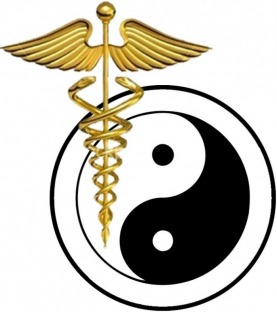

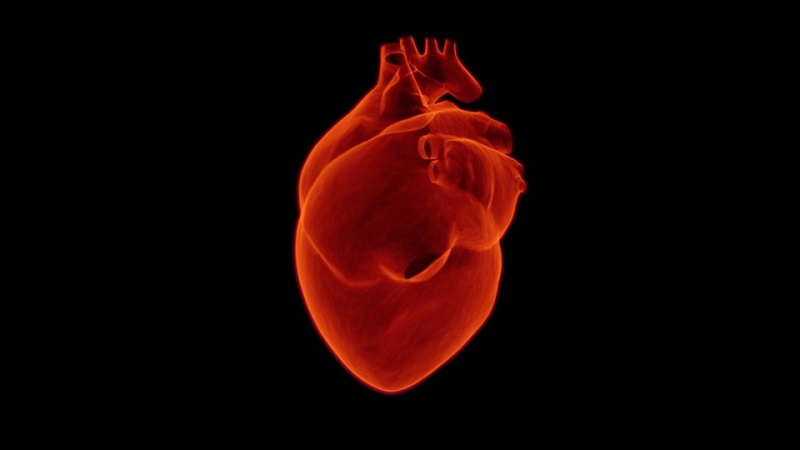
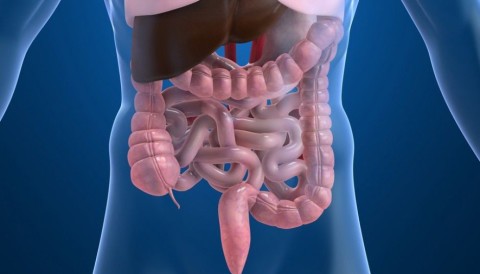
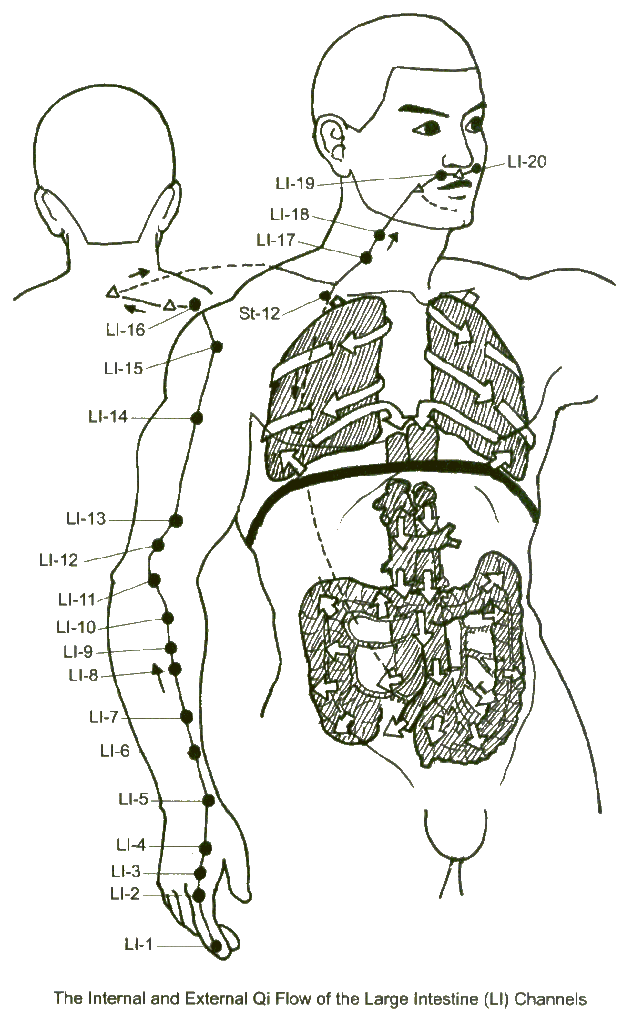

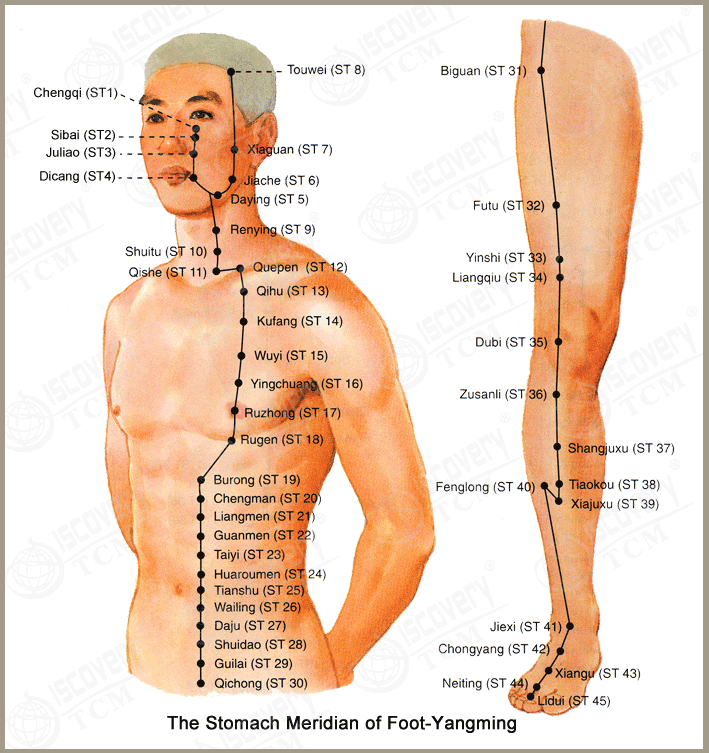


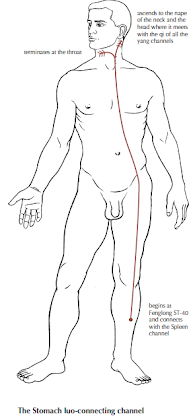
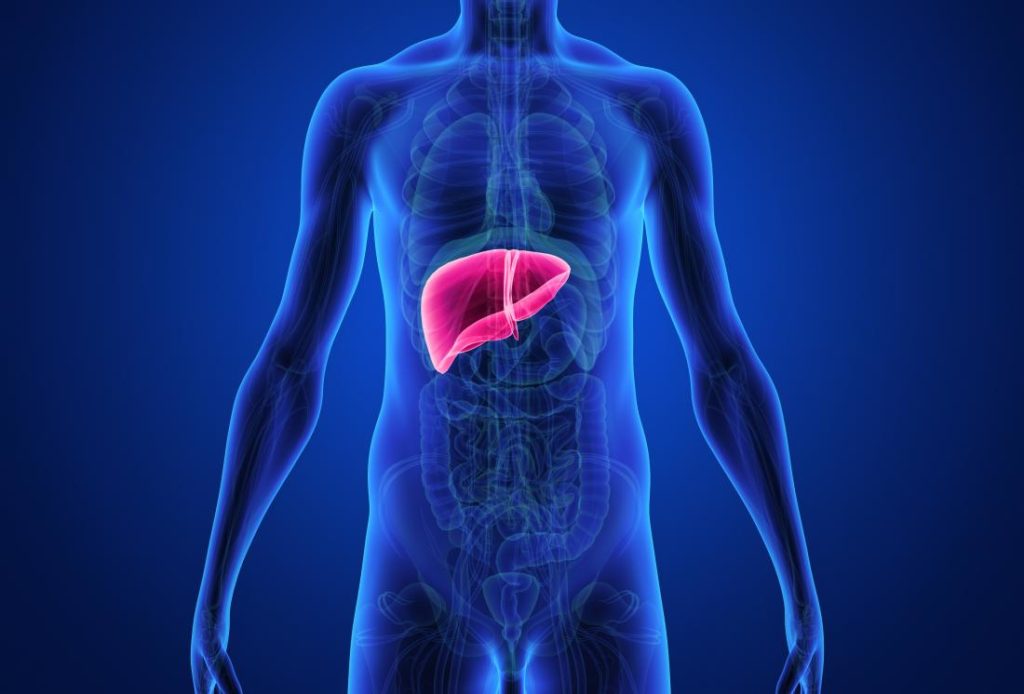
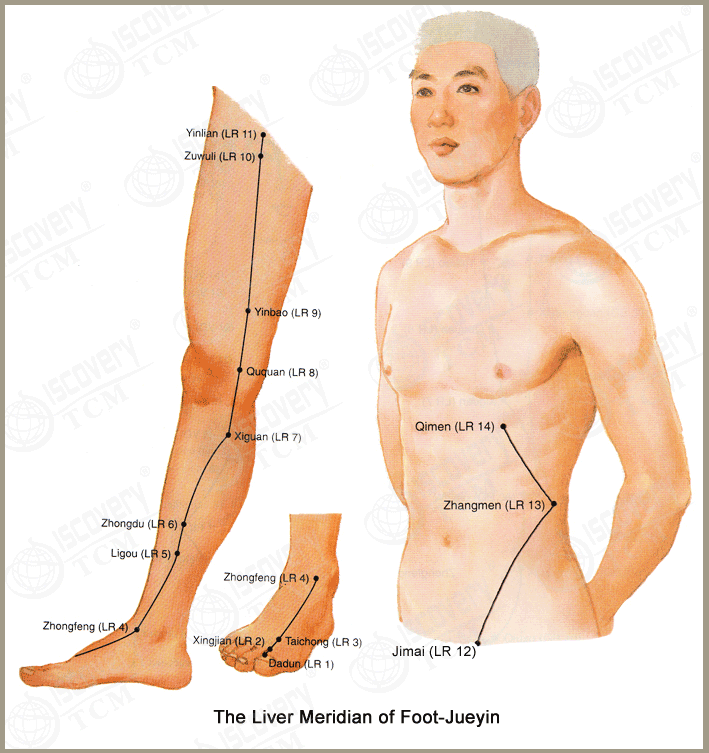
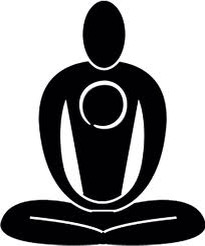

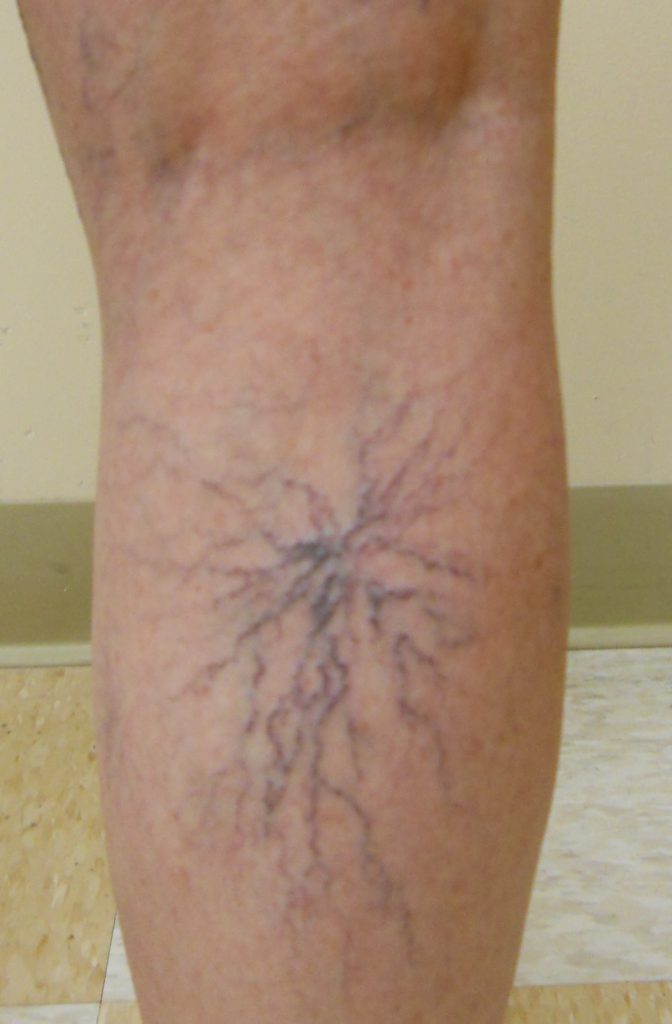
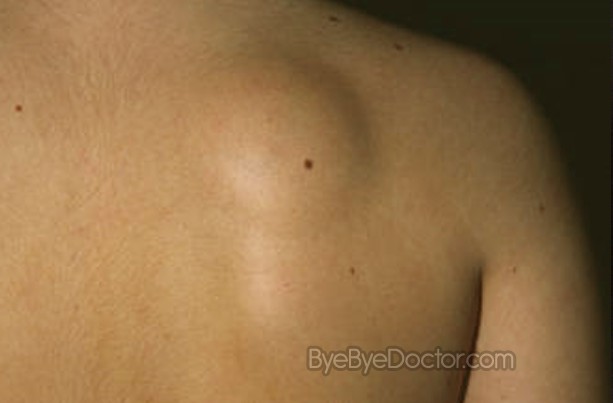




No Comments